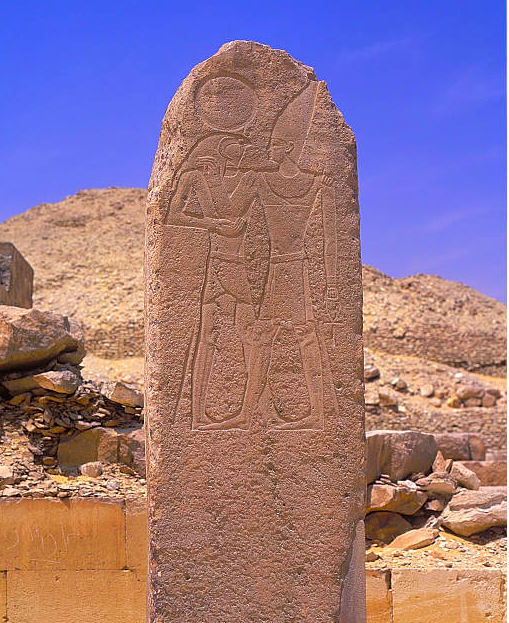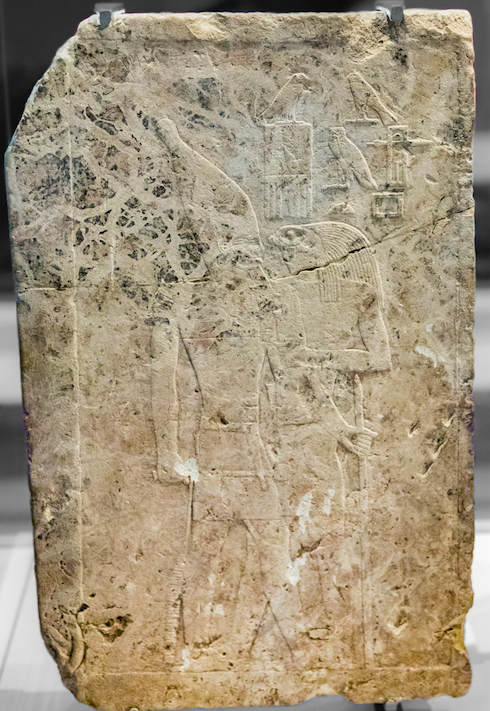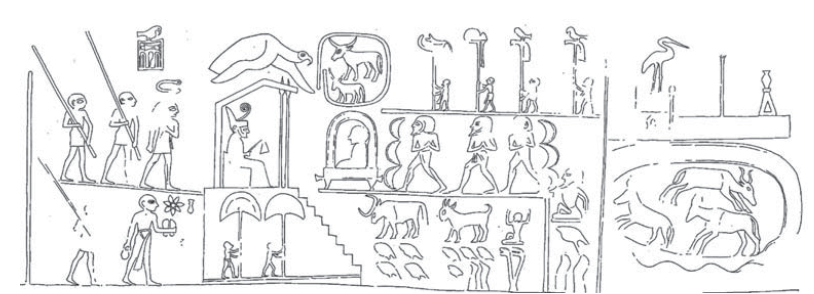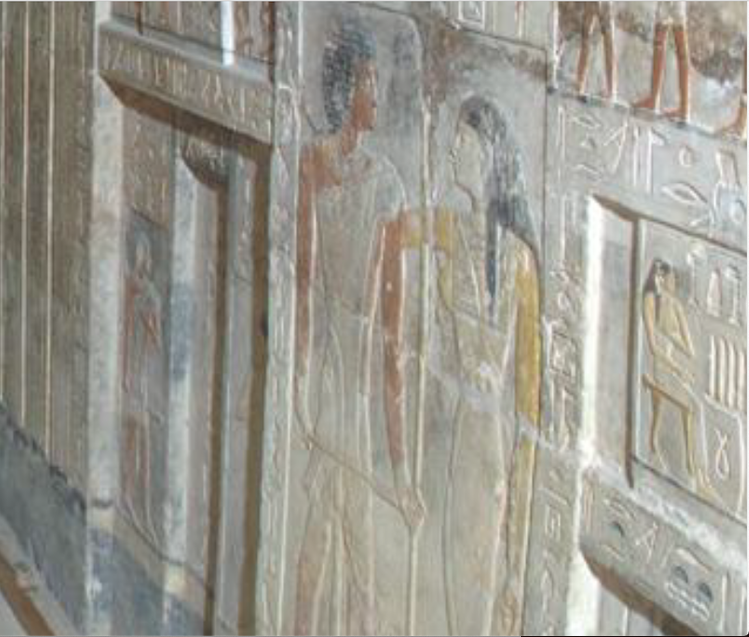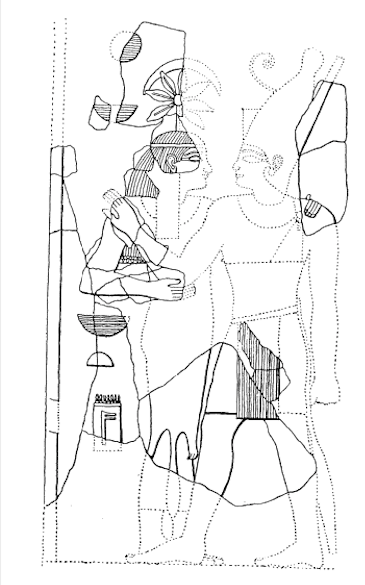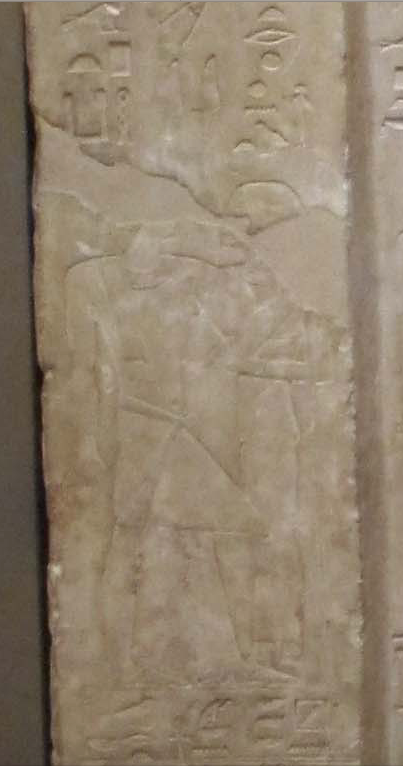« False door », Pyramid Texts and hairdressing
Stela « false-door » de Sn-w?m (the brother renewed).
VIth dynastie. Giza. Ht. 1m 84. Museum of Fine Art Boston.
Le central pannel which is under the door's cylinder, represents the embrace of the spouses wearing each le title « knowed by the king (=Rê) », because marriage symbolised exactly the union of humanity (the spouse) with Rê (the husband). This divine union was the aim of the door's passage and of all the magic formulae of pyramid texts :
TP 456 (T/A/S 11; P/F/E B, M/A/Eg 1; Na/F/E 10; Nb/A/Eg1) :
« The one who knows it, that word of Rê (r? sw rrjrn pn n R?, et do them (=récite) (jr=f sn), thoses magic formulae of Horakhty (?k?w jpnnw ?r ??ty), he will be known of Rê (wnn=f m r?j n T?), he will be the friend of Horakhty (wnn=f m smr n ?r-??ty) ».
Left side scene of hairdressing, the oldest known : the réunion (gathering) of hair, meant the réunion of the two river banks (=Isis et Nephtys), when happened the union de these two goddess avec Osiris-Rê N :
TP 667B (P/F/Se B 76 N/F/Se B 80 Nt/F/E ii 61)
§1951 « Horus (=Rê) comes with his hair bounded (= hair of Isis and of Nephtys, cf. forthcoming article) as his fathers's protector (jw ?r sn? m n? jt=f), he stands up as Horus, on the river banks (ou: head of the river-banks) (tp j?mwt), while his two sisters are at his side, Isis and Nephtys ».
Laure de Lamotte ©
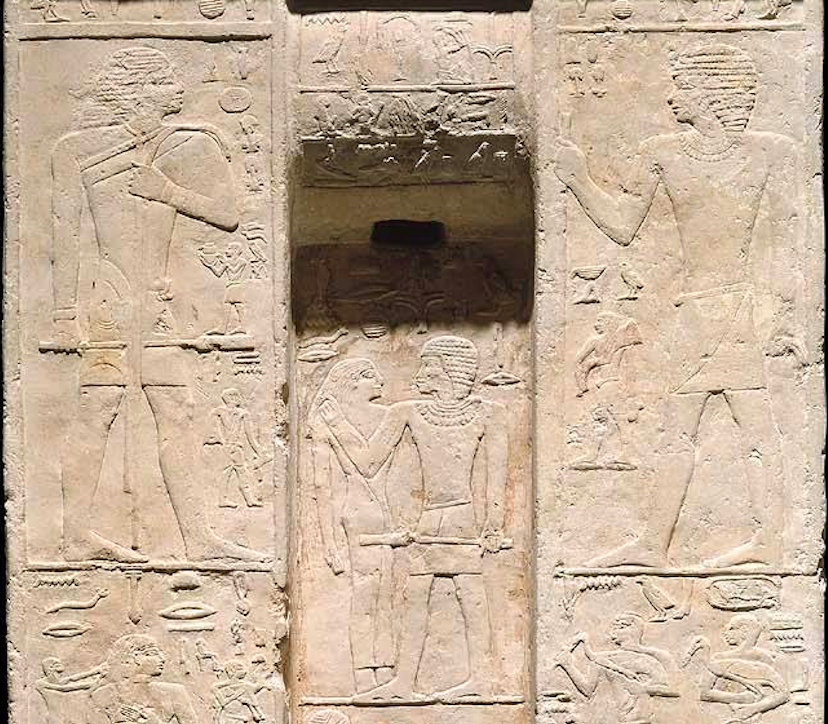
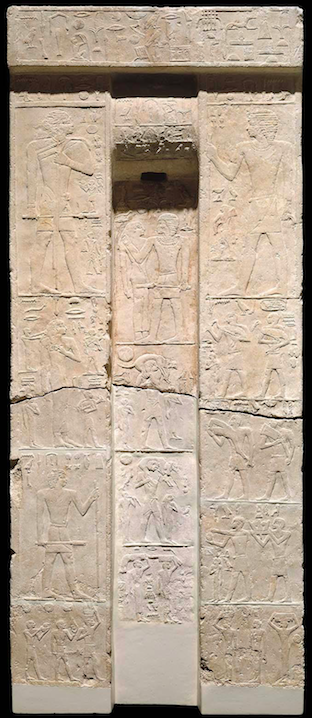
Last edited: 22/05/2021
Add a comment



